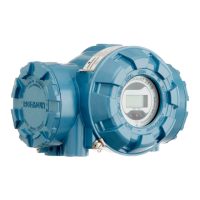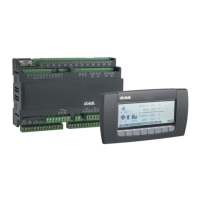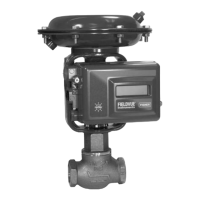3.4.10 Non-IS connection
The non-IS explosion-proof/flameproof compartment has a terminal block for connecting
power supply, communication buses to host systems, relay outputs, and HART
®
4-20 mA
analog input and output.
Prerequisites
Note
Ensure that o-rings and seats are in good condition prior to mounting the cover in order to
maintain the specified level of ingress protection. The same requirements apply for cable
inlets and outlets (or plugs). Cables must be properly attached to the cable glands.
Procedure
1.
Ensure that the power supply is switched off.
2. Ensure that the cover jam screw (F) (see Figure 3-14) is completely threaded into
the housing. It is intended to disallow the removal of the transmitter cover in
flameproof environments without the use of tooling. The cover jam screw is
threaded into the housing at factory.
3. Remove the cover on the non-IS terminal compartment.
4. Run the wires through the cable gland/conduit. Install wiring with a drip loop in
such a way that the lower part of the loop is under the cable/conduit entry.
5. Connect wires to the terminal block. See Table 3-8 for information on the terminal
block connections.
6. Use the enclosed metal plug to seal any unused port.
7.
Tighten the conduits/cable glands.
8.
The cover on the terminal compartment should be tightened to mechanical stop
(metal to metal). Make sure the cover is fully engaged to meet explosion-proof
requirement and to prevent water from entering the terminal compartment.
9. Loosen the cover jam screw until it contacts the cover. Turn the jam screw an
additional 1/2 turn counterclockwise to secure the cover.
Note
Application of excessive torque may strip the threads.
10. Verify that the cover cannot be removed.
Installation Reference Manual
December 2019 00809-0100-2410
50 Reference Manual

